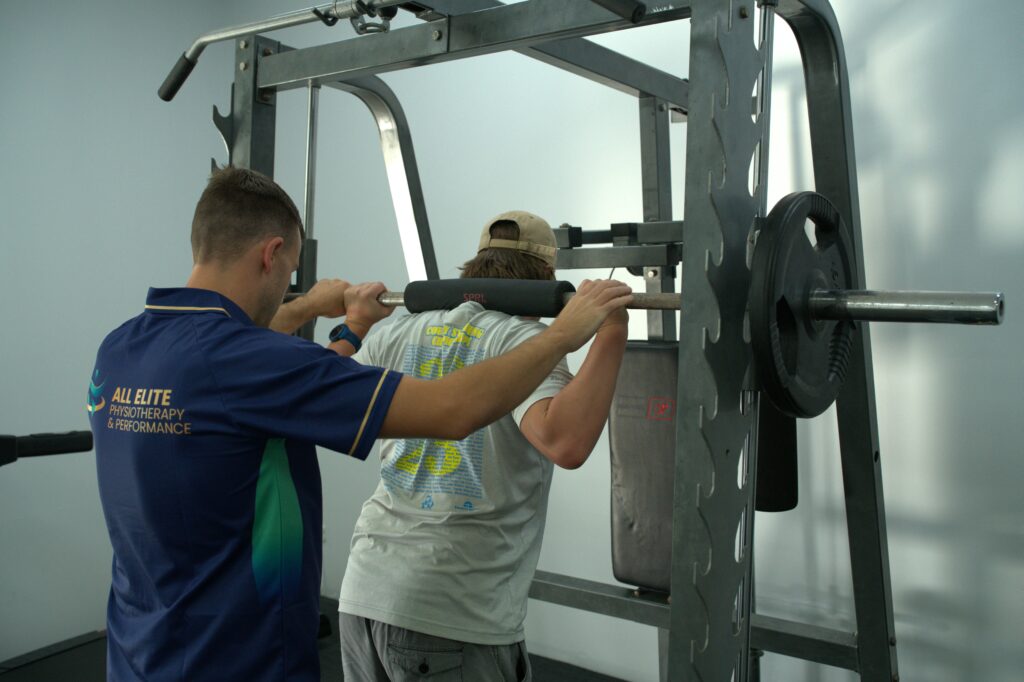Physiotherapy or Surgery for ACL Injuries: What You Should Know
Key Takeaways
- Both physiotherapy and surgery can successfully treat ACL injuries, depending on severity and lifestyle.
- Physiotherapy focuses on strengthening, balance, and functional movement for non-surgical recovery.
- Surgery offers long-term stability for complete tears but requires dedicated rehabilitation.
- Consistent physiotherapy, both pre- and post-surgery, provides the best outcomes for mobility, performance, and injury prevention.
An anterior cruciate ligament (ACL) injury can change the way you move, train, and perform. Once the ligament tears, one of the most important questions to consider is whether to rely on physiotherapy or to undergo surgery. The best decision depends on several factors, including the type of tear, your activity level, and your long-term goals. Some people recover fully through structured ACL rehabilitation, while others require surgical reconstruction supported by ongoing physiotherapy.
At All Elite Physiotherapy & Performance, our goal is to help you choose the treatment approach that best suits your condition and lifestyle. Both physiotherapy and surgery can restore strength and function, but understanding how they differ will help you make the most informed decision for your recovery.
Understanding the ACL and Its Role in Stability
The anterior cruciate ligament is one of four major ligaments that stabilise the knee. It connects the femur (thigh bone) to the tibia (shin bone) and prevents the knee from sliding forward during movement. The ACL plays a critical role in sports that require jumping, pivoting, or quick changes in direction.
When the ligament tears, you may hear a popping sound followed by swelling, pain, and instability. These symptoms can make even simple movements uncomfortable. Recognising injury signs and symptoms early is essential because timely assessment improves your recovery outcome.
What Happens When the ACL Tears
ACL injuries typically occur when the knee is twisted or overstressed. Athletes often experience them while landing awkwardly from a jump, changing direction suddenly, or colliding with another player. However, they can also happen during everyday activities, especially if you lose balance or misstep.
The severity of an ACL injury ranges from a mild sprain to a complete tear. A physiotherapist or doctor can confirm the diagnosis through physical tests and imaging such as MRI. Based on the results, you will receive a treatment plan tailored to your needs, which may include physiotherapy, surgery, or both.

Physiotherapy and Surgery: The Two Main Treatment Options
Both physiotherapy and surgery aim to restore stability and function in the knee. Physiotherapy focuses on strengthening the muscles that support the joint and retraining movement patterns to compensate for ligament weakness. Surgery involves reconstructing the torn ligament, followed by extensive rehabilitation to regain movement and strength.
Each option has its place in ACL management, and both require commitment to physiotherapy for best results.
When Physiotherapy Alone May Be Enough
For many patients, physiotherapy offers an effective, non-invasive alternative to surgery. This approach works particularly well for partial tears or for individuals who don’t participate in high-impact sports. Through a structured program, physiotherapists help restore stability, mobility, and confidence in the injured knee.
Rehabilitation focuses on improving muscle strength, flexibility, and coordination. Consistency is key, as progress depends on your dedication to both in-clinic sessions and at-home routines. Regularly performing rehabilitation exercises helps restore joint control, prevents stiffness, and supports a safe return to daily activities.
Patients who follow a tailored rehabilitation plan often regain full function and return to active lifestyles without requiring surgical intervention.
When Surgery Is the Better Option
Surgery is typically recommended for complete ACL ruptures, repeated instability, or for athletes who intend to return to sports involving cutting, pivoting, or jumping. During reconstruction, a surgeon replaces the torn ligament with a graft made from the patient’s own tissue or a donor tendon.
After surgery, physiotherapy remains crucial. Recovery begins with gentle exercises to manage pain and swelling, followed by progressive strength and stability training. The goal is to restore full movement and prepare the knee for sport-specific activities.
The process and recovery stages often resemble those described in ACL injury treatment, where ongoing physiotherapy supports healing and long-term knee function.
Preparing for Surgery with Prehabilitation
Before undergoing surgery, many patients benefit from prehabilitation, a targeted exercise program that builds strength and flexibility in the injured leg. This approach helps reduce swelling, increase mobility, and improve surgical outcomes.
Prehabilitation also enhances your confidence and body awareness before the operation. Patients who start physiotherapy early generally recover faster because their muscles and joints are already conditioned to handle post-surgical demands.
What to Expect After Surgery
Recovery following ACL surgery involves several stages. The first focuses on pain relief and controlling inflammation. You’ll begin gentle range-of-motion exercises to prevent stiffness and maintain blood flow.
In the next phase, your physiotherapist will introduce controlled strengthening and stability exercises. Over time, treatment shifts toward functional movements such as squats, lunges, and balance drills. This gradual progression ensures your knee adapts safely to increased physical demands.
The process is similar to structured sports injury management, where each phase of rehabilitation supports measurable improvement in strength and function.

Comparing Recovery Timelines
Recovery time can vary depending on the severity of the injury and the chosen treatment.
- Physiotherapy-only recovery: Typically takes three to six months.
- Surgical recovery: Usually requires nine to twelve months, with ongoing physiotherapy to support each stage.
The difference lies not only in the time frame but also in the level of intensity. Physiotherapy-only recovery focuses on strength and stability, while surgical recovery adds an extra layer of healing and graft protection.
Regardless of which path you take, consistent attendance and following your physiotherapist’s guidance will determine the quality of your outcome.
Long-Term Knee Health and Injury Prevention
Even after recovery, maintaining knee health requires ongoing attention. Strength, flexibility, and balance exercises are vital for preventing re-injury. Understanding load versus capacity helps you find the right balance between training intensity and your body’s tolerance, reducing the risk of overuse injuries.
Physiotherapists also educate patients on proper movement patterns, warm-up routines, and conditioning exercises that protect the ACL during high-impact activity.
Common Myths About ACL Recovery
One of the biggest misconceptions is that every ACL tear requires surgery. In reality, many patients can achieve full function with physiotherapy alone, particularly if they maintain strong supporting muscles.
Another common myth is that surgery guarantees faster recovery. Post-surgical rehabilitation can be lengthy and requires patience, discipline, and consistent physiotherapy. The most successful recoveries come from combining medical expertise with active engagement in your program.
Returning to Sport After ACL Treatment
Returning to sport is often the ultimate goal for many ACL patients. Physiotherapists perform detailed assessments to ensure your knee can handle the physical stress of running, jumping, and changing direction. These assessments measure strength, balance, and confidence in movement.
A gradual return-to-sport plan includes sport-specific drills that simulate game conditions while maintaining safety. Athletes who complete their rehabilitation and follow preventative strategies experience fewer setbacks and enjoy greater long-term performance.

Making the Right Choice for Your Recovery
Both physiotherapy and surgery can lead to successful outcomes when guided by an experienced team. The right path depends on your goals, daily activity level, and commitment to rehabilitation.
At All Elite Physiotherapy & Performance, we use evidence-based treatment methods to help every patient recover effectively. Whether you’re returning to sport or rebuilding mobility after surgery, our personalised approach ensures you regain confidence in your movement and performance.
To understand what to expect during your first session, our physiotherapy appointment guide explains how we assess, plan, and begin your journey to full recovery.
